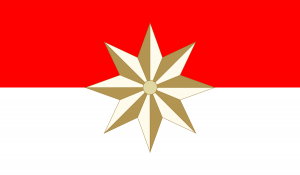Language/Sundanese/Grammar/Questions
Hi Sundanese learners! 😊
In this lesson, we will dive into the mechanics of asking questions in Sundanese. Asking the right questions is crucial in communication and can help deepen your understanding of the Sundanese language and culture.
Don't miss the chance to check out these pages as you wrap up this lesson: Pronouns, Conditional Mood & Adjectives.
Basic structure of Sundanese question[edit | edit source]
In the Sundanese language, asking a question is relatively simple. It involves reversing the order of the subject and the verb.
To illustrate this concept, let us consider the sentence "Asep geus sare bari." (Asep has finished his work.)
If we want to ask "Has Asep finished his work?", we simply reverse the order of the subject and verb:
"Sare bari Asep geus?" (Has Asep finished his work?)
Let's take another example: "Kuring teu keur balik keur." (I'm not going back home.)
To form a question, we simply place the subject after the verb:
"Teu keur balik keur kuring?" (Am I not going back home?)
Note that in Sundanese, we don't use the auxiliary verb "do" in questions as English does.
Types of questions[edit | edit source]
Yes-no questions[edit | edit source]
In Sundanese, just like in English, a yes-no question demands a simple answer of either "yes" or "no."
To form a yes-no question, we can simply add the question marker "eu" at the end of the sentence.
For example:
"Mangga geus sarena?" (Have you finished eating?) - "Geus" (Yes)/ "Henteu" (No)
"Emag heunteu?" (Is it spicy?) - "Heun" (Yes)/ "Henteu" (No)
Wh-questions[edit | edit source]
Wh-questions ask for information and require a more detailed answer. In Sundanese, like in English, they begin with an interrogative word (such as "what", "where", "who", "when", "why" and "how").
To form a Sundanese wh-question, start with the interrogative word, follow with the reversed subject-verb order, and then end with the rest of the sentence.
For example:
"Naon anu nuju kuha di dieu?" (What are you trying to get here?)
"Ngan saur urang ka mana?" (Where did he take us to?)
"Manehna nuju ngadamel alesan naon?" (Why is he making that excuse?)
"Pameget sopir enya?" (Who is the driver's boss?)
"Deudeuhna sirahana saprak konser?" (When will the concert end?)
For "how" questions, you can use either "carana" (how) or "pisan" (how much). Here are some examples:
"Carana ngabiar sare bari?" (How did you manage to finish your work?)
"Remen pisan teh?" (How much does this cost?)
Examples[edit | edit source]
Here's a dialogue for you to practice building basic Sundanese questions:
- Person 1: "Abdi nyarios seueur ramuan naon pikeun sahati?" (What ingredients do I need to make this dish?)
- Person 2: "Sate kaasup eh." (Does it include satay?)
- Person 1: "Henteu, ratu anjeun ngambang buah naon?" (No, how do you flavor the dish?)
- Person 2: "Kulit kayu manis pikeun rasa keur." (Cinnamon bark for flavoring.)
- Person 1: "Abdi sing ngagunakeun ramuan naon aya-aya?" (Can I use any type of spice?)
- Person 2: "Teh diuk katuhu ku cita rasa abdi, tapi nuju waeur rasa teh." (It depends on what flavor you want, but be careful with the amount of spice you use.)
Further reading[edit | edit source]
➡ If you have any questions, please ask them in the comments section below.
➡ Feel free to edit this wiki page if you think it can be improved. 😎
Other Lessons[edit | edit source]

